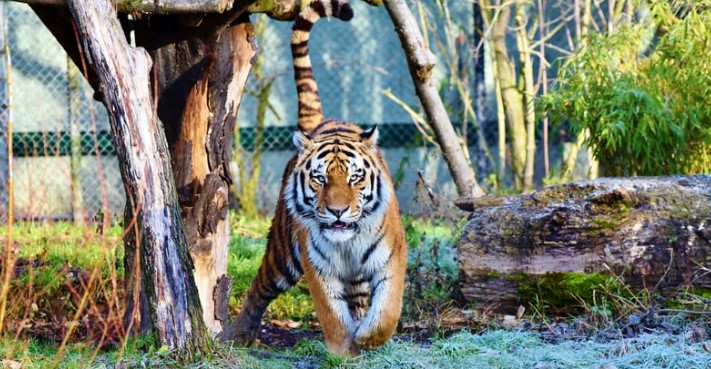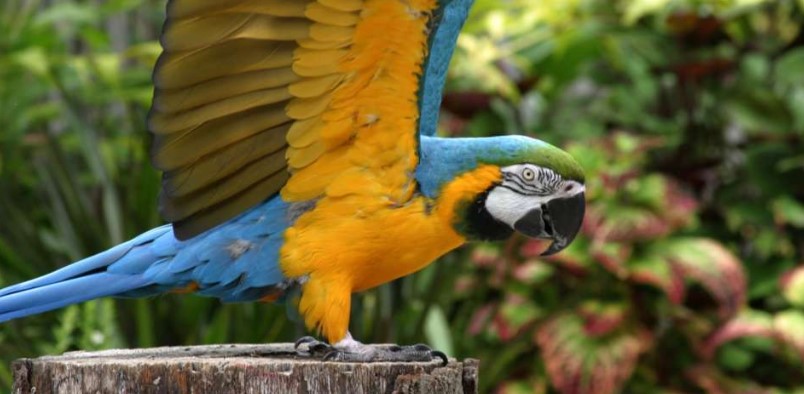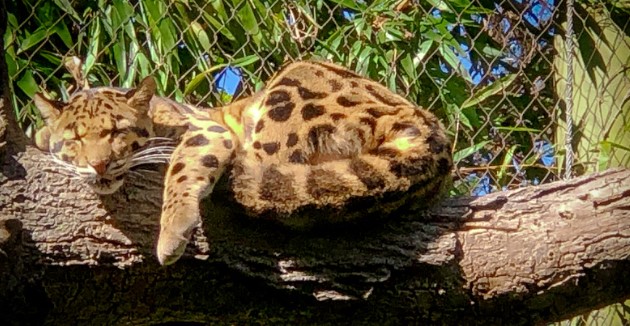Exploring Conservation Champions: A Journey Through the Best Zoos in the Southeast

From North America’s bustling city centers to South America’s diverse landscapes, zoos have played a pivotal role in conservation, education, and recreation. They are not just theme parks where the main attraction is the wild animal species, but they also serve as vital centers for research, preservation, and public awareness.
The Southeast, in particular, boasts a rich biodiversity, making it a natural hub for some of the best zoos in the United States. The region showcases its natural treasures through these zoological parks while playing an integral role in preserving its diverse ecosystem.
Criteria for Selection
To unearth the best zoos in the Southeast, one must consider more than just the number of exotic animals housed. Here’s a look at the factors we’ve taken into account for our rankings:
- Conservation Efforts: Beyond entertainment, a zoo’s primary goal is to conserve endangered animals. Effective zoos invest in programs and partnerships to safeguard species within their walls and in the wild. Initiatives range from breeding programs for endangered species to extensive research processes contributing to global conservation strategies.
- Animal Welfare Standards: The care of animals is paramount. Top-tier zoos adhere to high animal welfare standards, ensuring habitats are as naturalistic as possible. It’s more than just ample shade and obstacle courses; it involves experienced veterinarians, animal care specialists, and environments that promote physical and mental well-being.
- Educational Programs: In the information age, zoos serve as an educational hub, introducing visitors to species they might never encounter otherwise. Through interactive exhibits, guided tours, and hands-on experiences, zoos play a pivotal role in enlightening the public about the world’s biodiversity.
- Visitor Experience and Amenities: While the animals are undoubtedly the star attractions, a visitor’s experience is shaped by much more. Facilities, accessibility, hours of operation, and amenities make a zoo visit memorable. A balance between natural animal habitats, comfortable viewing areas for guests, and educational and recreational facilities elevate a zoo from just another animal attraction to a major destination.
Stay tuned as we journey through the Southeast, unearthing its zoological treasures based on these criteria.
Top Zoos in the Southeast
Zoo Atlanta in Atlanta, Georgia:
Nestled within Grant Park in downtown Atlanta, Zoo Atlanta is an accredited sanctuary housing over 1,000 animals from over 220 species. A crown Therapod habitat, home is a crowning jewel to Ya Lunn and Xi Lunn. Remarkably, apart from Washington D.C., this is the sole U.S. location where one can gaze upon these magnificent creatures. Among the giant panda breeding program, gorilla conservation efforts, and an amphibian protection program against a lethal fungus stand out.
The F, among its numerous conservation initiatives, African Rain Forest exhibit takes visitors on a journey through Africa, showcasing gorillas, lions, zebras, and more. Children can delight in interactive zones, including petting zones, otter habitats, playgrounds, and rides like the carousel and Skytrain Express. Overall, Zoo Atlanta shines brightly for its giant pandas, immersive gorilla conservation programs, and engaging children’s zones.
Nashville Zoo in Nashville, Tennessee:
Shorted expansive Nashville Zoo is a drive south of downtown Nashville. It involves over 3,000 creatures, ranging from majestic elephants to playful penguins. The Jungle Gym is a highlight, drawing children to its intricate outdoor playground. Interactive zones such as the Grasmere Historic Home and Farm let children step into a farmer’s shoes, milking cows and feeding sheep.
The African Savanna brings a piece of the wild to Tennessee, letting zebras and antelope graze together. At the same time, the Unseen New World reveals a captivating world of insects and spiders. With 65 acres to explore, educational touchpoints, and playful amenities, the Nashville Zoo offers a family-friendly adventure brimming with knowledge and excitement.
Brevard Zoo located in Melbourne, Florida:
Stretching over 75 acres along Florida’s scenic Space Coast, Brevard Zoo is an invitation to immerse oneself in wildlife adventures. A standout feature is the Treetop Trek, where visitors can ascend to the canopy and zip through trees. Kayaking tours provide a serene journey along the Indian River Lagoon, offering glimpses of native birds and wildlife.
The zoo provides numerous close encounters, from feeding giraffes to interacting with otters and stingrays. The Wild Florida exhibit captures the essence of the state, housing alligators, panthers, and black bears. For a mix of entertainment and education, families can explore exhibits, attend shows like BOING!, and hop on a looping train ride around the park. In essence, Brevard Zoo pairs traditional exhibits with adrenaline-pumping adventures.
North Carolina Zoo located in Asheboro, North Carolina:
The world’s largest natural habitat zoo, the North Carolina Zoo, sprawls across 2,600 acres, promising vast open-air exhibits. With habitats mirroring the African and North American wilderness, guests can marvel at 40-acre African Plains or watch bison roam freely. Home to over 1,800 animals, the zoo boasts elephants, lions, polar bears, and the majestic Komodo dragons.
Children can dive into hands-on learning with treehouses, mazes, and sensory gardens in the Kid’s Nature Discovery Zone. From paddleboats to hiking trails and feeding experiences, the zoo offers a comprehensive immersion into the wild. As a harmonious blend of education and recreation, the N.C. Zoo accentuates its focus on replicating natural habitats for its vast array of species.
Birmingham Zoo, located in Birmingham, Alabama:
Having opened its doors in 1955, the Birmingham Zoo sprawls across 100 acres and is home to more than 900 animals. The Predator Zone, a detailed showcase of nature’s fierce carnivores like lions, tigers, and bears, is a must-visit. Visitors can embark on the Trails of Africa, a walking trail painting a vivid picture of the African savanna, complaining zebras, ostriches, and warthogs.
Children can splash around in the water play area or take a spin on the carousel. Behind-the-scenes experiences bring visitors face-to-face with animals, enhancing the overall zoo experience. The Birmingham Zoo blends thrilling exhibits and family-centric activities from daily shows to nocturnal events.
Each while, in their offerings, aligns each of these zoos with the collective mission of promoting animal welfare, conservation, and education. They stand as beacons, enhancing our understanding of the wild and fostering an appreciation for the tour planet’s web of life on our
Conservation and education highlights
Zoos have long been a bridge between the wild and the urban, offering city dwellers a chance to witness the wonders of the animal kingdom. But beyond the exhibitions and animal enclosures, they play a pivotal role in global conservation and education initiatives.
- Zoo Atlanta: With its commendable giant panda breeding program, gorilla conservation efforts, and initiative to safeguard amphibians from deadly fungi, Zoo Atlanta places conservation at the forefront. They offer diverse educational programs, engaging visitors about the importance of biodiversity and ecosystem preservation. Notably, their commitment to the conservation of gorillas sets a standard, underscoring the dire need to protect these magnificent beings from the brink of extinction.
- Nashville Zoo: Apart from being a haven for diverse species, the Nashville Zoo is instrumental in educating visitors about the ecosystems these animals inhabit. Their interactive exhibits, like the Grasmere Historic Home and Farm, blend education with hands-on experiences. The zoo entertains and educates visitors about animal care, habitat preservation, and conservation necessities by offering behind-the-scenes encounters.
- Brevard Zoo: Positioned along Florida’s coast, it utilizes its unique location to educate about the state’s rich biodiversity. Through its kayaking adventures and Treetop Trek, visitors learn about the ecosystems in which these animals thrive. Their Wild Florida exhibit is a testament to their conservation initiatives, focusing on species native to Florida and the challenges they face due to urbanization and climate change.
- North Carolina Zoo: As the world’s largest natural habitat zoo, the North Carolina Zoo emphasizes conservation through habitat replication. Their vast, open-air exhibits educate visitors on the delicate balance of ecosystems, from African plains to North American prairies. Their commitment to maintaining these natural habitats underscores the global urgency to preserve such environments.
- Birmingham Zoo: The Predator Zone and Trails of Africa provide a deep dive into ecosystems and the roles each species plays within them. By educating visitors on the complex interdependence of these animals, the zoo nurtures a more informed and compassionate audience, advocating for the protection of endangered species globally.
Visitor Tips and Recommendations
Visiting a zoo can be an exhilarating experience, amplified with a touch of planning and insight.
- Best Times to Visit: Weekdays, especially in the morning, are often less crowded, offering a serene experience. If visiting in the warmer months, arriving early helps avoid the midday heat, ensuring animals are more active.
- Special Events or Seasonal Attractions: Many zoos, like the Birmingham Zoo, host nocturnal events or seasonal showcases. It’s always beneficial to check their event calendar online before planning your visit.
- Maximizing the Zoo Experience: Wear comfortable shoes; exploring a zoo involves significant walking. Hydrate regularly and take periodic breaks, especially if visiting with children. Opting for behind-the-scenes tours or feeding experiences can provide a richer, more intimate understanding of the animals.
Remember, every zoo visit is not just about recreation but also an opportunity to understand, appreciate, and advocate for the incredible biodiversity our planet treasures.
Conclusion
The majesty of the animal kingdom and the awe it evokes is unparalleled. Zoos have often been the bridge that allows us to experience this wonder, even in urban environments. But beyond the spectacle and excitement, they serve an essential role in the global initiative to conserve our planet’s rich biodiversity.
Supporting zoos, especially those that prioritize conservation, education, and animal welfare, is imperative. When we walk through the gates of institutions like Zoo Atlanta or the North Carolina Zoo, we are not just embarking on a recreational journey. We are participating in a larger movement that strives to ensure the longevity and well-being of countless species, many of which are on the brink of extinction.
Education and conservation initiatives taken by these zoos provide us with the tools and knowledge to better appreciate and understand the world around us. They remind us of the delicate balance of ecosystems and the vital role each species plays within them.
So, the next time you consider a day out or a weekend trip, consider visiting one of these incredible institutions. By doing so, you’re guaranteeing a memorable experience and casting a vote for a brighter and more sustainable future for our planet’s diverse inhabitants.
Let’s ensure that the tales of these magnificent creatures are not just tales we read or tell. Instead, let’s take action and ensure they remain an enduring testament to the world’s beauty and diversity. Encourage, support, and champion the cause of zoos that are vanguards of conservation. Let’s walk hand-in-hand towards a more informed and compassionate future.





